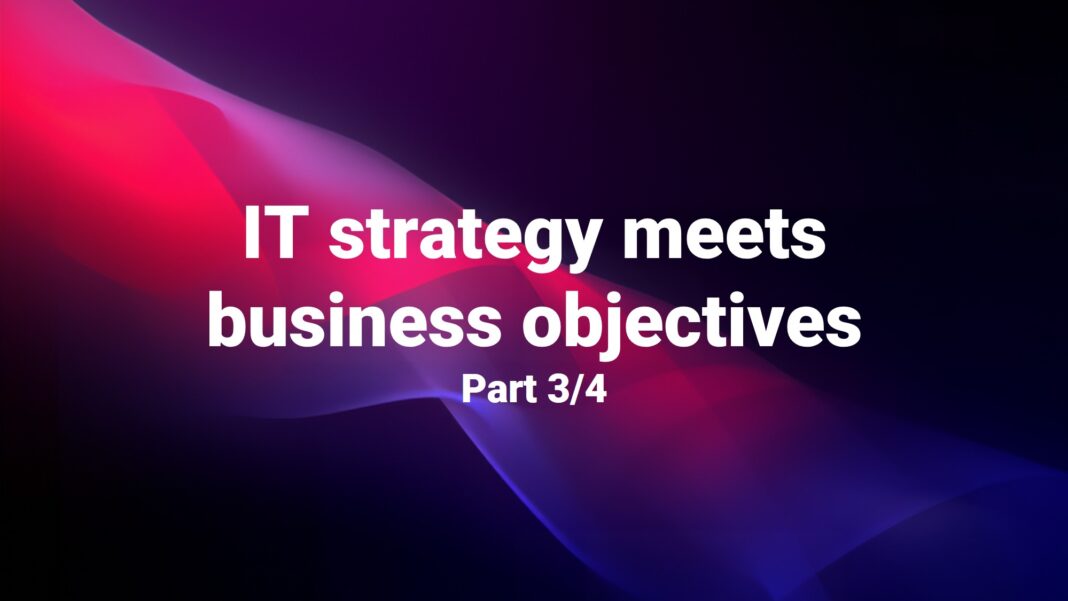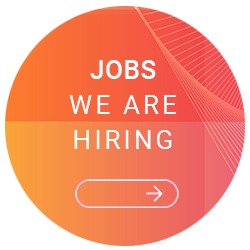Last Updated on 27. October 2025
Welcome to the third part of our series ‘IT Strategy Meets Business Goals’. In four consecutive articles, we show how genuine collaboration between business and IT can work in companies – and how you can benefit from it.
The second part of the series illustrated that business-IT co-creation is a living practice that brings faster innovation, better customer centricity and more resilient business models.Practical examples showed that successful co-creation is based on agile teams, shared responsibility and close collaboration between IT and business. To guarantee the long-term success of co-creation, IT must act as a co-designer of the business model, governance models and common target systems (OKRs, KPIs) must be introduced, and transformation must be seen as an ongoing management task.
Co-creation is more than just a new model of collaboration – it has a profound impact on a company’s technological architecture and organisational design. After all, those who think about business and IT together must also understand technology as a strategic design element. Modern co-creation models are therefore based on platform logic, modularity and intelligent automation.
Platform logic, modularity and intelligent automation
1. Platform thinking: IT as an enabler for scaling and speed
Digital platforms are much more than technical infrastructures – they are the organisational framework for innovation, standardisation and collaboration. Platforms decouple central capabilities (e.g. data access, identity management, payment processes) from individual products or departments – and make them available for use across the entire company.
Examples of platform capabilities:
- Self-service data access (e.g. via data mesh)
- API-based business services
- Developer portals for internal product teams
Effect: IT is no longer a bottleneck, but rather the ‘enabling fabric’ of the company.
2. Composability: Thinking about business models like software
The concept of the ‘composable enterprise’ (Gartner) describes companies whose business logic consists of modular, flexibly combinable business and technology functions. Here, business-IT co-creation is anchored at the architecture level: loosely coupled, reusable building blocks (capabilities) enable new services to be quickly designed, tested and scaled.
Key principles:
- Modularisation of business processes
- Capability-based architecture models (e.g. TOGAF or BIZBOK)
- Microservices and API-first design
Result: Organisations become more agile, resilient and innovative – because they don’t build everything from scratch, but combine things intelligently. And IT projects depend on IT capabilities that the business needs to develop its own business capabilities!
3. AI and automation as strategic decision-making partners
The integration of artificial intelligence into decision-making processes is fundamentally changing the interaction between business and IT. AI systems not only take on repetitive tasks – they support decisions, forecast business developments and identify optimisation potential in real time. In mature organisations, AI is an integral part of the control logic – e.g. in the form of:
- Predictive analytics in operational decisions
- AI-supported roadmap planning
- Automated governance control (‘policy as code’)
Vision for the future: Decision-making teams will no longer consist solely of humans – they will also include algorithms.
4. Digital Twin of the Organisation: Understanding business in real time
Another future trend is the ‘Digital Twin of the Organisation’ (DTO). This is a dynamic, digital model of the entire company – including processes, data flows, roles, systems and rules. A DTO makes it possible to simulate the effects of decisions, identify bottlenecks at an early stage and engage in co-creation on an objective information basis.
Practical example: Some large companies are already using DTOs to transform their IT organisation or for risk analysis in supply chains.
Conclusion
Anyone who is serious about business-IT co-creation needs not only new roles and methods, but also a technological basis that supports this way of thinking. Platforms, modularity, APIs and AI are not ‘IT topics’ – they are the structural prerequisites for an organisation in which business and IT are no longer two separate worlds, but share a common operating system.
In the fourth and final part of our series, we provide concluding recommendations from CIO Advisory practice.







